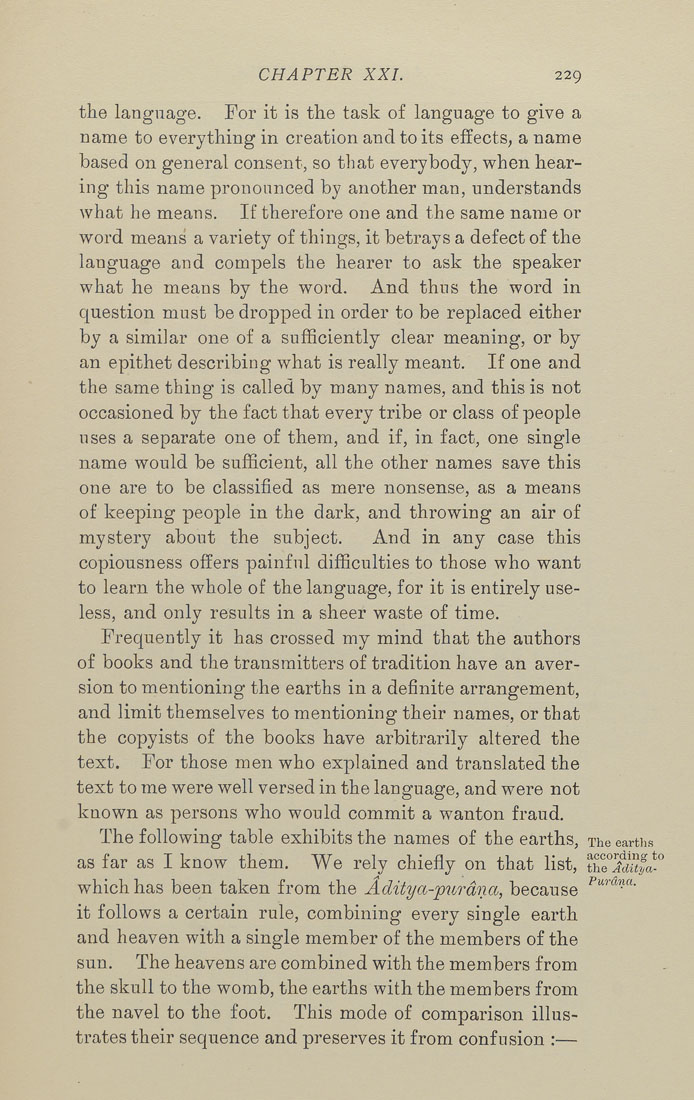Bīrūnī, Muḥammad ibn Aḥmad, Alberuni's India (v. 1)
(London : Kegan Paul, Trench, Trübner & Co., 1910.)
|
||
|
|
|
|
| Page 229 |

CHAPTER XXI. 229 the language. For it is the task of language to give a name to everything in creation and to its effects, a name based on general consent, so that everybody, when hear¬ ing this name pronounced by another man, understands what he means. If therefore one and the same name or word means a variety of things, it betrays a defect of the language and compels the hearer to ask the speaker what he means by the word. And thus the word in question must be dropped in order to be replaced either by a similar one of a sufficiently clear meaning, or by an epithet describing what is really meant. If one and the same thing is called by many names, and this is not occasioned by the fact that every tribe or class of people uses a separate one of them, and if, in fact, one single name would be sufficient, all the other names save this one are to be classified as mere nonsense, as a means of keeping people in the dark, and throwing an air of mystery about the subject. And in any case this copiousness offers painful difficulties to those who want to learn the whole of the language, for it is entirely use¬ less, and only results in a sheer waste of time. Frequently it has crossed my mind that the authors of books and the transmitters of tradition have an aver¬ sion to mentioning the earths in a definite arrangement, and limit themselves to mentioning their names, or that the copyists of the books have arbitrarily altered the text. For those men who explained and translated the text to me were well versed in the language, and were not known as persons who would commit a wanton fraud. The following table exhibits the names of the earths, The earths as far as I know them. We rely chiefly on that list, IhTldUya." which has been taken from the Aditya-purdna, because ^"™'^"- it follows a certain rule, combining every single earth and heaven with a single member of the members of the sun. The heavens are combined with the members from the skull to the womb, the earths with the members from the navel to the foot. This mode of comparison illus¬ trates their sequence and preserves it from confusion :— |
| Page 229 |







